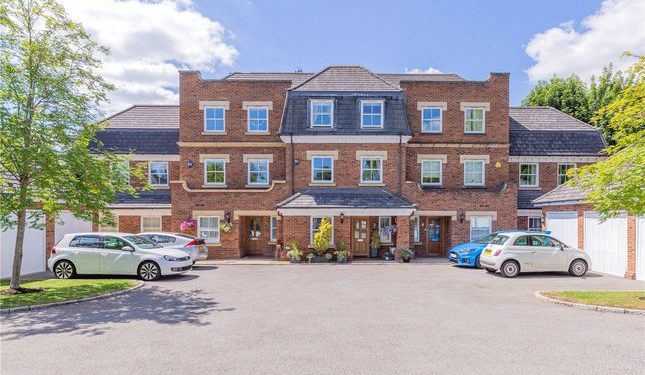St Albans, with its rich history and close proximity to London, has long been an attractive place for homebuyers. But how do its house prices stack up against nearby towns? Understanding the local real estate market can help potential buyers make informed decisions. In this blog, we’ll explore the current trends in St Albans’ housing market and compare it to neighboring areas. Whether you’re looking for apartments for sale in St Albans or simply curious about regional price differences, this guide is for you.
Overview of St Albans Real Estate Market
St Albans is known for its rich history, beautiful architecture, and proximity to London, which make it an attractive location for homebuyers and investors alike. The real estate market in this historic city reflects a blend of heritage charm and modern convenience. Over the years, St Albans has witnessed steady growth in property values, driven by demand from both local buyers and those commuting to London.
Current Trends in St Albans
As of 2023, the property market in St Albans is characterized by high demand and limited supply. St Albans estate agents report that the city continues to attract professionals and families seeking a comfortable lifestyle with easy access to the capital. Recent trends indicate a rise in the demand for family homes and apartments, with buyers looking for properties offering good schools, parks, and vibrant community life. Consequently, this demand has driven up prices, making St Albans one of the more expensive areas in the region.
Factors Influencing House Prices
Several factors influence house prices in St Albans:
– Proximity to London: The city’s strategic location, just a short train ride from central London, makes it appealing to commuters.
– Quality of Life: St Albans offers excellent amenities, schools, and green spaces, which enhance its desirability.
– Historical Appeal: The city’s historical sites and beautiful architecture attract buyers interested in culturally rich environments.
Comparison with Neighboring Towns
To understand how house prices in St Albans compare with those in neighboring towns, it is essential to explore the broader regional context.
Comparative Analysis of House Prices
Several towns surround St Albans, including Hemel Hempstead, Harpenden, and Watford. Each of these areas presents a unique real estate landscape:
– Hemel Hempstead: Known for more affordable housing options, Hemel Hempstead’s average house prices are generally lower than those in St Albans. This difference largely comes down to factors such as location and amenities. It presents a more cost-effective choice for buyers prioritizing affordability over proximity to the capital.
– Harpenden: Often sharing a similar profile with St Albans, Harpenden features high house prices, reflecting its affluent status and desirable living conditions. Like St Albans, it draws London commuters due to its excellent transport links and quality schools.
– Watford: Positioned closer to London, Watford offers a mixed range of house prices. While some areas are comparable to St Albans in terms of pricing, others are more accessible, making Watford a diverse real estate market.
Economic Factors Affecting Surrounding Areas
The economic health of a region significantly impacts home prices. St Albans, with its thriving local economy and strong employment opportunities, naturally sees higher property values. In contrast, towns like Hemel Hempstead might have lower average house prices partly due to different local economic dynamics. Factors such as employment rates, average incomes, and business growth contribute to the variation in house prices across these areas.
Differences in Neighborhood Amenities
The amenities available in different neighborhoods greatly affect property prices. St Albans boasts a rich array of amenities, including top-rated schools, a lively arts and culture scene, and extensive green spaces. These features enhance its appeal and contribute to higher housing costs.
In comparison, Hemel Hempstead offers more basic amenities, which is reflected in its more accessible property prices. Harpenden, much like St Albans, attracts homebuyers with its high-quality schools, parks, and family-friendly atmosphere. Watford, on the other hand, provides a wide range of urban amenities with its shopping centers and entertainment options, giving it a competitive edge in attracting diverse buyer profiles.
In summary, while St Albans commands a higher price tag, it offers a unique blend of historical charm, quality of life, and accessibility, making it a preferred choice for those who can afford it. Each neighboring town has its unique appeal, providing different opportunities depending on buyer priorities.
Historical Price Trends
Understanding the historical price trends in the housing market can offer valuable insights for buyers, sellers, and investors. This section will explore how house prices in St Albans have evolved over the years and compare them to those in neighboring towns. Additionally, we’ll take a look at predictions for future price movements.
St Albans Price Trends Over the Years
St Albans has long been a desirable location due to its rich history, excellent schools, and proximity to London. Over the past decade, house prices in St Albans have shown a consistent upward trajectory. A decade ago, the average house price was considerably lower, but recent years have seen significant growth. This rise can be attributed to limited housing supply and high demand, as more people seek properties in this vibrant town.
– 2013-2015: Moderate growth, as the post-recession market began to recover.
– 2016-2018: A steady climb, driven by economic stability and improved transport links.
– 2019-2022: Continued appreciation, despite market uncertainties caused by events like Brexit and the COVID-19 pandemic.
– 2023: Current trends indicate strong price retention, driven by the town’s enduring appeal.
Price Trends in Neighboring Towns
Neighboring towns like Harpenden, Watford, and Hemel Hempstead also exhibit fascinating price trends, albeit with some variations. Harpenden, much like St Albans, has seen consistent growth due to its premium appeal.
In contrast, Watford experienced a more sporadic price increase, influenced by its larger housing inventory and varied property types. Hemel Hempstead, known for its affordability compared to St Albans, has shown a slower but steady increase, attracting buyers who are priced out of more expensive areas.
Predictions for Future Price Movements
Predicting future price movements in the property market involves considering a multitude of factors like economic conditions, government policies, and regional developments. For St Albans, experts anticipate continued demand, sustaining house price growth.
– Economic influences: Economic recovery post-pandemic and interest rate changes could affect affordability.
– Development projects: New infrastructure or amenities in St Albans could further enhance its attractiveness.
– Market dynamics: Ongoing low supply versus high demand is likely to maintain upward pressure on prices.
While short-term fluctuations may occur, the long-term outlook for St Albans remains positive, reinforcing its position as a sought-after location.
Conclusion
In summary, the housing market in St Albans presents a dynamic landscape with significant implications for buyers and sellers alike. Compared to its neighboring towns, St Albans often commands higher prices due to its historic charm, excellent schooling, and robust transportation links to London. However, this also means more significant investment prospects for property owners. Whether you are searching for a family home or exploring apartments for sale in St Albans, understanding local price trends can help you make informed decisions. Consulting with local estate agents can further refine your approach by providing localized expertise and insights tailored to your needs.











































































